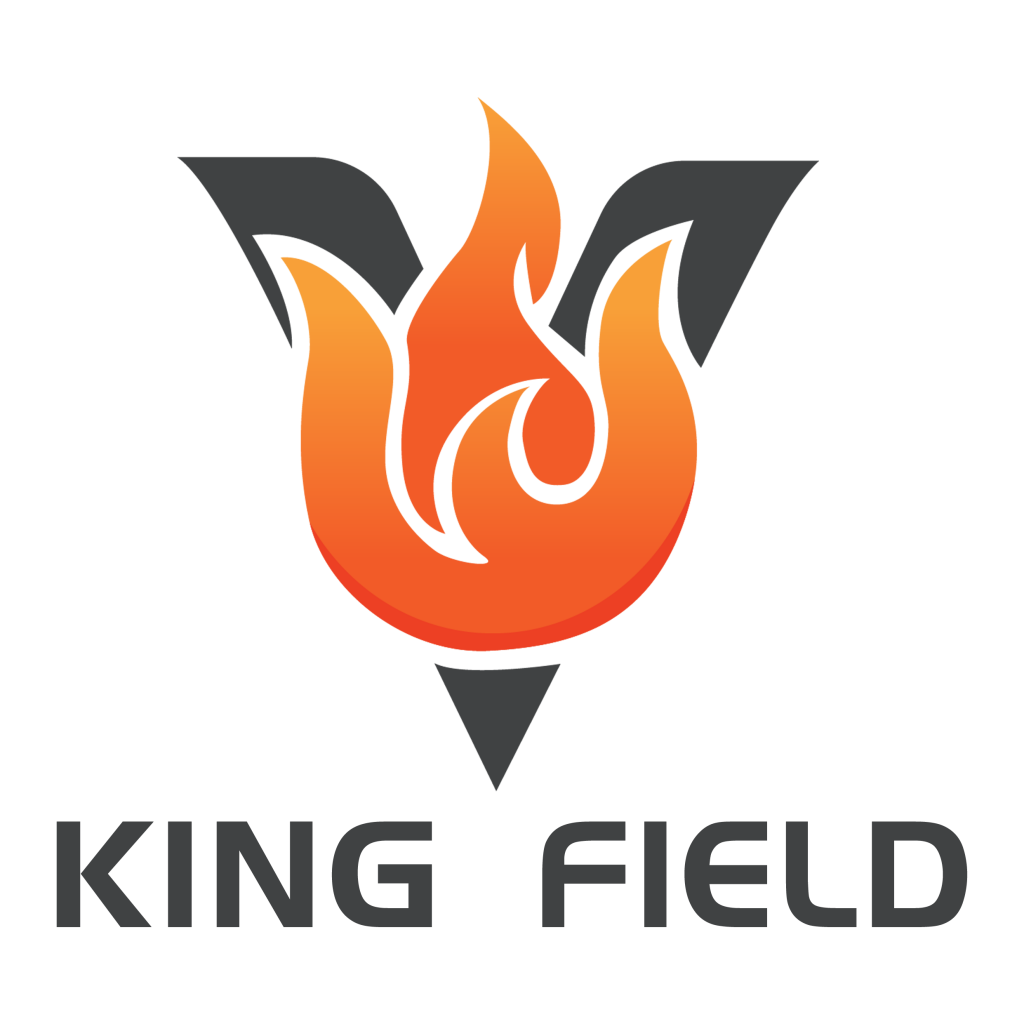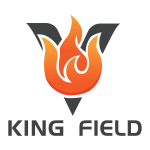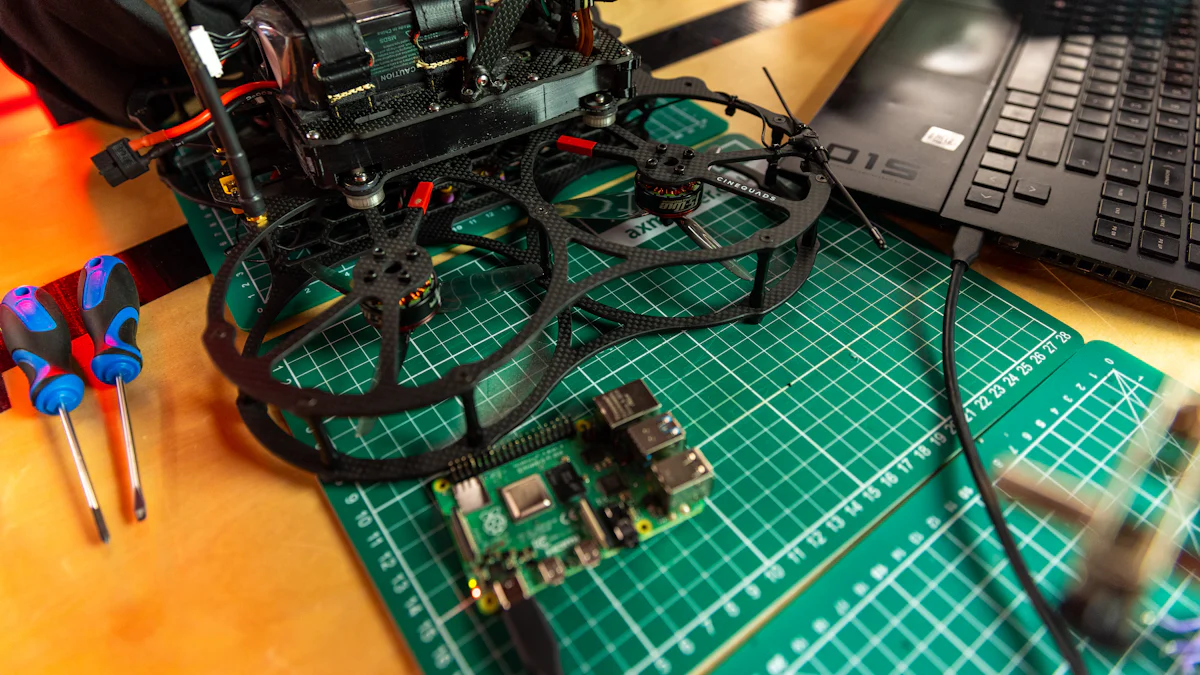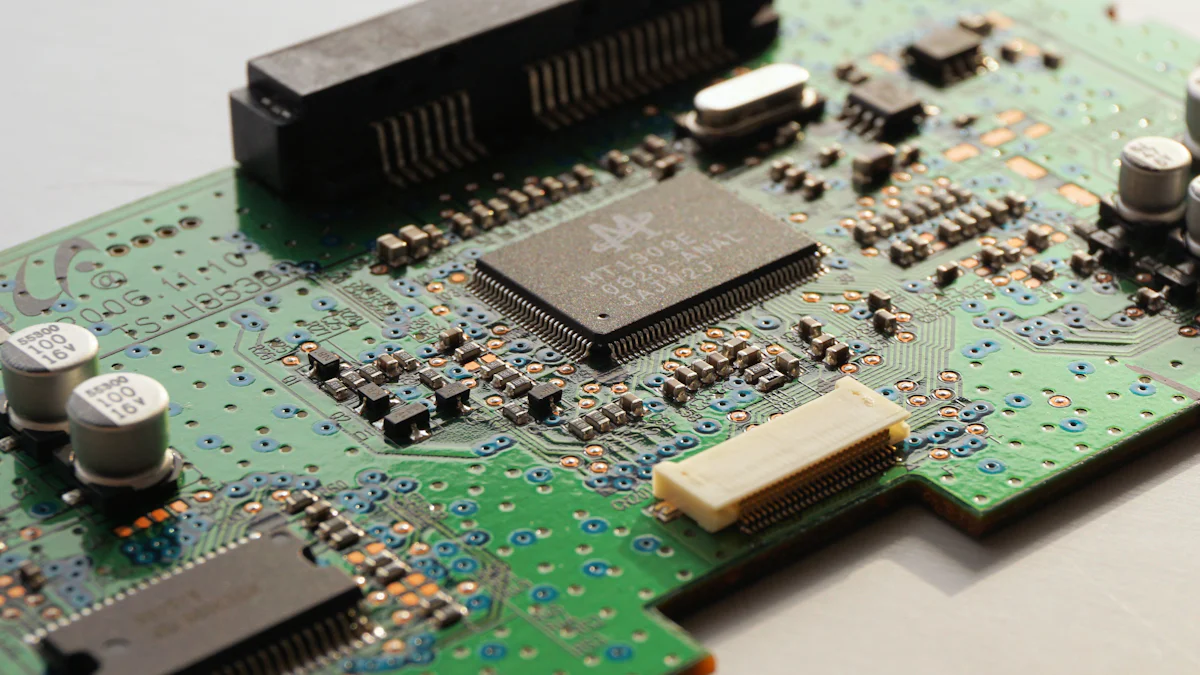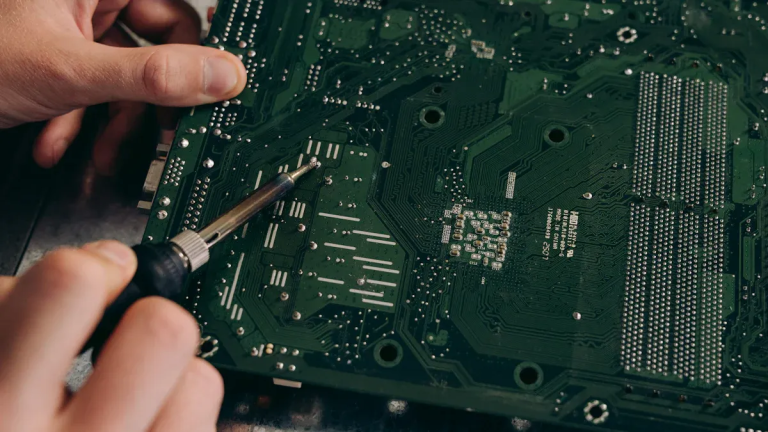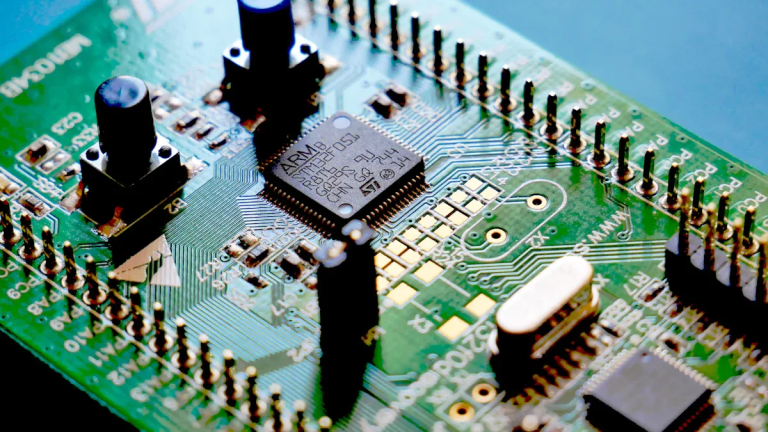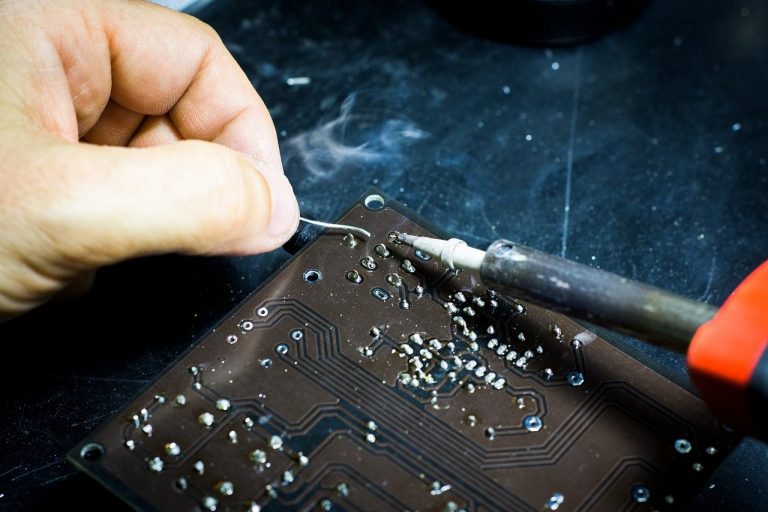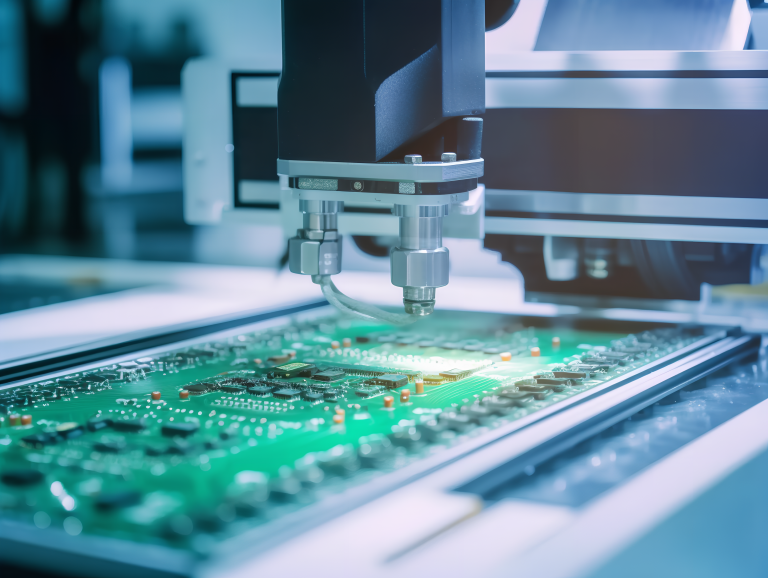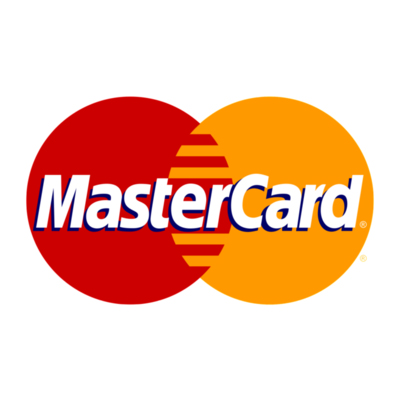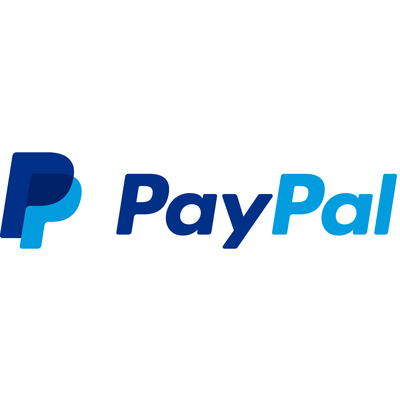PCB prototyping allows you to test and validate your design before committing to large-scale production. It helps you identify flaws and refine functionality. Using a pcb prototyp board ensures you can experiment with different layouts and components. On the other hand, full-scale production focuses on creating consistent, high-quality boards for mass manufacturing. Prototyping gives you flexibility, while full production emphasizes efficiency. Understanding these processes helps you align your decisions with your project’s goals, budget, and timeline.
Key Takeaways
- PCB prototyping lets you test and improve your design first. This helps find mistakes early, saving both time and money.
- Full-scale production makes many PCBs that are high-quality and consistent. It focuses on being efficient and saving money by making more at once.
- Think about your project goals when picking between prototyping or full-scale production. Prototyping is great for testing, while full-scale production works for big orders.
- Your budget is important. Prototyping costs more per piece but avoids big mistakes later. Full-scale production lowers costs when making many pieces.
- Look at how complex your design is and how many you need. Prototyping is better for tricky designs, while full-scale production is good for large amounts.
What is PCB Prototyping?
PCB prototyping is the process of creating a preliminary version of a printed circuit board. This step allows you to test and refine your design before moving to full-scale production. It plays a critical role in ensuring your final product meets functional and performance expectations.
Purpose of PCB Prototyping
The primary goal of PCB prototyping is to validate your design early in the development cycle. By creating a functional prototype, you can verify functionality, identify design flaws, and refine the product. This process saves time and money by preventing costly mistakes during mass production. It also enables rapid design iterations, allowing you to make necessary revisions before finalizing the design.
Prototyping is essential for small-scale testing and concept verification. It ensures your printed circuit board performs as intended under real-world conditions. Whether you’re working on consumer electronics, automotive components, or medical devices, prototyping helps you achieve a high-quality PCB that meets industry standards.
Benefits of Using a PCB Prototyp Board
Using a pcb prototyp board offers several advantages. It allows you to experiment with different layouts and components without committing to large-scale production. This flexibility is crucial for making design refinements and ensuring your PCB design aligns with project goals.
Prototyping also supports rigorous testing of your printed circuit board. You can evaluate its performance, durability, and functionality in various applications. For example, aluminum-backed PCBs are ideal for LEDs due to their superior thermal management. Similarly, prototyping is vital for industrial equipment and medical devices, where precision and reliability are critical.
Another benefit is the ability to produce a small number of units for testing. This approach minimizes waste and reduces costs, especially when working with complex designs. By using pcb prototyping services, you can streamline the development process and focus on creating high-quality PCBs.
Limitations of PCB Prototyping
While PCB prototyping offers many benefits, it has some limitations. Prototyping is not suitable for large-scale production due to its higher per-unit cost. It is designed for testing and revisions rather than mass manufacturing. Additionally, the materials and processes used in prototyping may differ from those in full-scale production, which can affect the final product.
Another challenge is scalability. Prototyping focuses on small-scale testing, so it may not fully replicate the conditions of mass production. This limitation makes it essential to transition to full-spec production once you finalize your design.
Despite these drawbacks, PCB prototyping remains a valuable tool for ensuring your printed circuit board meets all requirements before moving to large-scale manufacturing.
What is Full-Spec Production?
Full-spec production refers to the final manufacturing phase where printed circuit boards (PCBs) are produced at scale. This process focuses on creating consistent, high-quality boards that meet the demands of large-volume manufacturing. Unlike prototyping, full-spec production emphasizes efficiency, scalability, and cost-effectiveness.
Objectives of Full-Spec Production
The primary objectives of full-spec production revolve around meeting the requirements of high-volume production. These include:
- Ensuring consistency across all units during mass production.
- Maintaining the reliability and durability of the final product.
- Achieving cost-effectiveness through economies of scale.
By focusing on these goals, full-spec production ensures that your PCBs meet industry standards while remaining scalable for larger volume production.
Processes in Full-Spec Production
The manufacturing process in full-spec production differs significantly from prototyping. It involves optimized workflows and specialized materials to ensure scalability and product quality. The table below highlights the key differences between prototyping and full-spec production:
| Aspect | PCB Prototyping | Full-Spec Production |
|---|---|---|
| Purpose | Validate design and identify flaws | Replicate designs at scale |
| Speed and Cost | Faster and more cost-effective | Time-consuming and higher costs |
| Materials and Manufacturing Process | Uses off-the-shelf materials | Uses specific materials and optimized processes |
| Testing and Quality Control | Rigorous testing to ensure specifications | Strict quality control throughout production |
| Scalability and Volume | Small batches, not suitable for large-scale | Large-scale production to meet demand |
Full-spec production also incorporates advanced testing and quality control measures at every stage. These processes ensure that each PCB meets the required specifications and performs reliably in its intended application.
Advantages of Full-Spec Production
Full-spec production offers several advantages for high-volume production. Its ability to produce large quantities while maintaining design fidelity makes it ideal for large-volume manufacturing. This scalability ensures that production can meet high demand efficiently. Streamlined processes enhance consistency across all units, which is critical for product quality. Additionally, economies of scale reduce costs, making full-spec production a cost-effective solution for larger volume production.
By focusing on scalable production capabilities and strict quality control, full-spec production ensures that your PCBs are ready for mass production. This approach is essential for industries requiring reliable and consistent products, such as consumer electronics, automotive, and medical devices.
Key Differences Between PCB Prototyping and Full-Spec Production
Purpose
The purpose of PCB prototyping and full-spec production differs significantly. Prototyping focuses on validating your design and testing its functionality. It allows you to identify flaws and refine performance before committing to large-scale manufacturing. This stage is essential for ensuring your PCB meets expectations under real-world conditions. You can also make adjustments based on testing results, which adds flexibility to the process.
In contrast, full-spec production emphasizes mass production. Its goal is to replicate your finalized design at scale while maintaining consistency and quality. This process ensures that every unit meets industry standards and performs reliably. While prototyping prioritizes experimentation and refinement, full-spec production focuses on efficiency and uniformity.
Cost
The cost implications of prototyping and full-spec production vary depending on your project needs. Prototyping typically incurs higher per-unit costs due to smaller quantities and specialized processes. However, it allows you to identify and correct design issues early, which can save money in the long run. Faster iterations and feedback during prototyping help you avoid costly mistakes during mass production.
Full-spec production benefits from economies of scale. Producing larger quantities reduces the per-unit cost, making it more cost-effective for high-volume manufacturing. However, the initial setup and production processes require more time and resources. While prototyping may seem expensive upfront, its ability to prevent design flaws justifies the investment.
Scalability
Scalability is another key difference between these two processes. Prototyping involves small batch production, which is ideal for testing but unsuitable for large-scale manufacturing. The materials and techniques used in prototyping are not designed for mass production. This limitation makes it necessary to transition to full-spec production once your design is finalized.
Full-spec production, on the other hand, is built for scalability. It uses standardized materials and streamlined manufacturing processes to replicate designs efficiently. Each unit produced matches the prototype in performance and quality. This scalability ensures that your production can meet high demand while maintaining consistency across all units.
Flexibility
Flexibility is one of the most significant aspects that sets prototyping apart from full-scale production. When you work with a prototype, you can easily make changes to the design. This process allows you to test different layouts, components, and configurations without committing to a final version. For example, if a specific component does not perform as expected, you can replace it and test again. This adaptability makes prototyping ideal for refining your design.
In contrast, full-scale production offers limited flexibility. Once you finalize the design and begin manufacturing, making changes becomes costly and time-consuming. The production process relies on standardized workflows and materials to ensure consistency. Any modification at this stage could disrupt the entire manufacturing cycle. Therefore, you must ensure your design is fully optimized before transitioning to full-spec production.
Tip: Use prototyping to experiment and perfect your design. Save full-scale production for when you are confident in your final version.
Flexibility also impacts timelines. Prototyping allows for rapid iterations, enabling you to address issues quickly. Full-scale production, however, requires more planning and preparation. While it excels in efficiency for large volumes, it lacks the adaptability needed for ongoing design changes.
Quality Control
Quality control plays a crucial role in both prototyping and full-scale production, but the approach differs significantly. During prototyping, you focus on testing the functionality and performance of your design. You can identify flaws, troubleshoot issues, and refine the product. This stage ensures your PCB meets the required specifications before moving to mass production.
Full-scale production, on the other hand, emphasizes consistency. Quality control measures are integrated into every step of the manufacturing process. Automated testing systems and strict protocols ensure each unit meets industry standards. This approach minimizes defects and guarantees reliability across all products.
Note: While prototyping focuses on individual testing, full-scale production prioritizes uniformity across large quantities.
Both processes require attention to detail, but the stakes differ. In prototyping, you aim to perfect a single design. In full-scale production, you ensure every unit matches the prototype in quality and performance. Understanding these differences helps you maintain high standards throughout your project.
Factors to Consider When Choosing Between PCB Prototyping and Full-Spec Production
Project Goals
Your project goals play a critical role in deciding between prototyping and full-spec production. If your objective is to validate a design or test its functionality, prototyping is the ideal choice. It allows you to experiment with different layouts and components while identifying flaws early. This approach ensures your design meets performance expectations before scaling up.
On the other hand, full-spec production focuses on replicating a finalized design at scale. If your goal is to meet market demand with consistent, high-quality products, this process is more suitable. It emphasizes efficiency and uniformity, ensuring every unit matches the prototype in performance. The table below highlights how project goals align with each process:
| Factor | PCB Prototyping Description | Full-Spec Production Description |
|---|---|---|
| Purpose | Validate design and identify flaws; test iterations and performance. | Accurately replicate designs at scale to meet market demand. |
| Speed and Cost | Faster and more cost-effective; allows for quick iterations and feedback. | Requires more time and higher costs due to complexity and scale. |
| Materials and Manufacturing | Uses off-the-shelf materials and flexible techniques; allows for testing different methods. | Involves specific materials and optimized techniques for consistent quality. |
| Testing and Quality Control | Rigorous testing to ensure specifications are met; identifies issues early. | Strict quality control measures throughout the manufacturing process. |
| Scalability and Volume | Not suitable for large-scale production; typically done in small batches. | Focuses on large-scale replication and requires efficient supply chains and processes. |
Budget Constraints
Budget constraints significantly influence your decision. Prototyping often has a higher per-unit cost due to advanced techniques and smaller production volumes. However, it provides critical insights that refine your design, ensuring the final product meets functional requirements. This investment can save money by preventing costly errors during mass production.
If your budget allows for larger-scale manufacturing, full-spec production becomes more cost-effective. Producing in bulk reduces the per-unit cost, making it ideal for high-volume requirements. Keep in mind that the initial setup and production processes require more resources, which can increase upfront expenses. Consider your financial limitations carefully to choose the most economical option.
- Prototyping involves creating small batches, which is faster and less expensive.
- It enables quicker iterations and feedback to identify design flaws.
- Full-spec production requires more time and higher costs due to larger scale and complexity.
Time-to-Market Requirements
Time-to-market is another crucial factor. Prototyping accelerates the development process by allowing you to visualize designs and test functionality quickly. It minimizes rework by identifying problems early, enabling faster iterations and feedback. This approach significantly reduces timelines, especially when uncertainties are minimal.
Full-spec production, while efficient for large volumes, requires more preparation. The focus on consistency and scalability means longer lead times. If your project demands a quick turnaround, prototyping offers a faster path to market. However, transitioning to full-spec production ensures your product can meet demand once the design is finalized.
- Prototyping helps visualize designs and test functionality.
- It minimizes rework needed in finalizing the design by identifying problems quickly.
- Full-spec production involves longer lead times but ensures scalability and consistency.
Design Complexity
The complexity of your PCB design plays a significant role in deciding between prototyping and full-scale production. If your design includes intricate layouts, advanced components, or multi-layer boards, prototyping becomes essential. It allows you to test these complex features in a controlled environment. You can identify potential issues and make adjustments before committing to large-scale manufacturing.
Prototyping is particularly useful when working with innovative or experimental designs. For example, if your PCB integrates cutting-edge technology, you need to ensure it functions as intended. Testing during the prototyping phase helps you refine the design and avoid costly errors later. This process is especially important for industries like aerospace or medical devices, where precision and reliability are critical.
On the other hand, simpler designs may not require extensive prototyping. If your PCB uses standard components and a straightforward layout, you can transition to full-scale production more quickly. However, even with simple designs, a prototype can still provide valuable insights. It ensures your design meets performance expectations before scaling up.
Tip: Always evaluate the complexity of your design. Prototyping is a smart choice for testing advanced features, while simpler designs may move directly to production.
Volume Requirements
Your volume requirements also influence whether you choose prototyping or full-scale production. If you need only a small number of units, prototyping is the better option. It allows you to produce limited quantities for testing or niche applications. This approach minimizes waste and keeps costs manageable.
For larger quantities, full-scale production becomes more practical. It leverages economies of scale to reduce the per-unit cost. This makes it ideal for meeting high demand in industries like consumer electronics or automotive manufacturing. Full-scale production ensures consistency across all units, which is crucial for maintaining quality.
Consider your project’s long-term goals. If you plan to scale up in the future, start with prototyping to perfect your design. Once you finalize the design, transition to full-scale production to meet higher volume needs. This strategy balances flexibility and efficiency, ensuring your project stays on track.
Note: Small batches work well for testing and refinement. Large-scale production is best for meeting market demand.
Understanding the differences between prototyping and full-spec production is essential for making informed decisions. Prototyping focuses on testing designs with small batches, offering flexibility for quick revisions. Full-spec production, however, emphasizes efficiency and consistency for large-scale manufacturing. While prototyping allows you to experiment and refine, full-spec production ensures cost-effective replication of finalized designs.
Evaluating your project needs is crucial. Consider factors like design complexity, budget, and volume requirements. Aligning these with the strengths of each process ensures your project achieves its goals efficiently. Choose wisely to balance flexibility, scalability, and quality.
FAQ
What is the typical lead time for PCB prototyping?
PCB prototyping usually takes 1-2 weeks, depending on the complexity of your design and the service provider. Some manufacturers offer expedited services for faster turnaround times. Always confirm timelines with your supplier to align with your project schedule.
Can I skip prototyping and go straight to full-scale production?
Skipping prototyping is risky. Prototyping helps you identify design flaws and test functionality before mass production. Without it, you may face costly errors during full-scale manufacturing. Always validate your design with a prototype to ensure reliability.
How do I choose the right PCB prototyping service?
Look for a service that offers quick turnaround times, high-quality materials, and customization options. Check reviews and ensure they have experience with your industry. A reliable service provider will also offer technical support to guide you through the process.
Is full-scale production always more cost-effective?
Full-scale production becomes cost-effective when you need large quantities. It reduces the per-unit cost through economies of scale. However, for small batches or testing purposes, prototyping is more economical. Assess your volume requirements to make the right choice.
Can I use the same materials for prototyping and full-scale production?
Not always. Prototyping often uses off-the-shelf materials for flexibility, while full-scale production relies on optimized materials for consistency and durability. Discuss material requirements with your manufacturer to ensure alignment between both stages.
